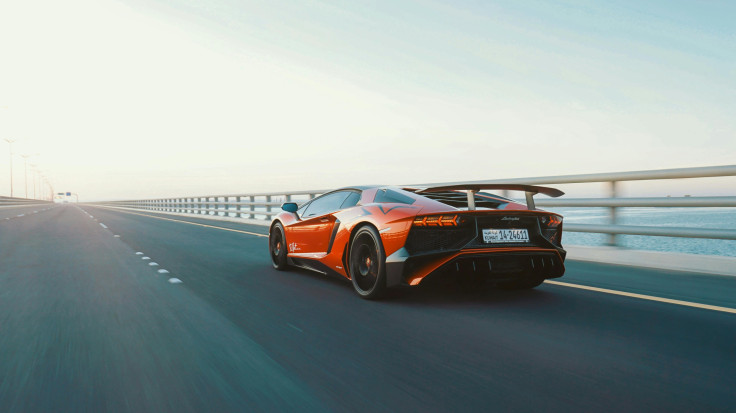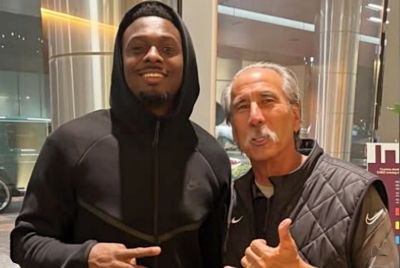Diogo Jota Accident Update: What Car Was He Driving? Inside the Lamborghini Involved in His Fatal Crash
The 28-year-old Liverpool star was driving a Lamborghini when a tyre blowout caused the fatal crash in Spain

Liverpool and Portugal are mourning the tragic loss of Diogo Jota, who died in a car crash in Spain on 3 July 2025. As tributes continue to pour in for the 28-year-old forward, questions have surfaced about the fatal accident, particularly regarding the high-performance vehicle he was driving. Here is what we know about the Lamborghini involved in the crash and the circumstances surrounding Jota's final journey.
The Fatal Accident of Diogo Jota and Brother André Silva
Jota and his younger brother André Silva were travelling from Porto to Santander when their Lamborghini crashed on the A-52 motorway near Zamora, in northwestern Spain, as reported by SkySports. According to local reports, the vehicle suffered a tyre blowout while overtaking another car. It then veered off the road and burst into flames.
Both Jota and Silva died at the scene. The pair were en route to catch a ferry back to the UK, avoiding air travel due to medical advice following Jota's recent minor lung surgery. The news has sent shockwaves through the football world, especially given Jota's recent success with Liverpool and Portugal.
What Car Was Diogo Jota Driving?
Multiple credible sources have confirmed that Diogo Jota was driving a Lamborghini at the time of the accident. While the exact model has not yet been officially disclosed, footballers are known to favour high-performance models such as the Lamborghini Huracán or Aventador, both capable of extreme speed and acceleration.
Lamborghinis are built for performance but require a high level of control and awareness, particularly at speed. The risk of tyre blowouts, although rare, is heightened in such vehicles when travelling long distances or on uneven road surfaces. Tragically, this mechanical failure proved fatal in Jota's case.
Why Was He Driving and Not Flying?
Jota's decision to travel by road stemmed from medical advice to avoid flying after undergoing lung surgery. The journey from Porto to Santander would have allowed him to board a ferry back to the UK while minimising pressure on his respiratory system.
This aspect of the incident adds a tragic layer to the story. What was meant to be a safer route turned into a deadly one. It also raises broader questions about player welfare and how clubs manage off-season or post-injury travel for their athletes.
Athlete Lifestyle and Supercars: A Dangerous Trend?
Professional footballers often invest in luxury cars, including supercars like Lamborghinis and Ferraris. While these vehicles symbolise success, they can also present serious safety risks, like low clearance, high speed, and limited visibility, especially when driven long distances or at high speed.
There have been previous high-profile accidents involving athletes and luxury vehicles. These incidents have led some experts to call for better driver education and stricter guidance for young players regarding road safety. In Jota's case, a perfect storm of medical recovery, road travel and supercar mechanics came together in tragedy.
Liverpool and the Football World React
Liverpool Football Club issued a heartfelt statement, describing Jota as a model professional and a beloved teammate. They also posted on Facebook a video tribute for their 'lad from Portugal.'
Jota was a key figure in Liverpool's recent Premier League title win, as well as their FA Cup and EFL Cup triumphs.
Cristiano Ronaldo and former manager Jürgen Klopp also paid tribute.
Não faz sentido. Ainda agora estávamos juntos na Seleção, ainda agora tinhas casado. À tua familia, à tua mulher e aos teus filhos, envio os meus sentimentos e desejo-lhes toda a força do mundo. Sei que estarás sempre com eles. Descansem em Paz, Diogo e André. Vamos todos sentir... pic.twitter.com/H1qSTvPoQs
— Cristiano Ronaldo (@Cristiano) July 3, 2025
Meanwhile, fans gathered outside Anfield with flowers and scarves, as reported by Daily Mail. Jota's legacy includes 49 caps for Portugal and two UEFA Nations League titles, the most recent in 2025.
Remembering Diogo Jota
Jota's tragic accident has left an enormous void in football. While the investigation continues, the spotlight now turns to the Lamborghini he was driving and the risks associated with such high-performance travel. One of football's brightest talents is gone too soon, but the questions raised may prompt overdue conversations about safety in the game.
© Copyright IBTimes 2025. All rights reserved.




















